Ys is a Japanese series of action role-playing games developed by Nihon Falcom. The series chronicles the life of the adventurer, Adol Christin.

Ice Climber is a platform game developed and published by Nintendo. It was released in 1985 for both the arcade VS. System and the Famicom / Nintendo Entertainment System console. The characters Popo and Nana, collectively known as the Ice Climbers, scale 32 vertically scrolling, ice-covered mountains to recover stolen vegetables from a giant condor. In some European countries, Ice Climber was bundled with the Nintendo Entertainment System.

Mario & Luigi: Superstar Saga is a 2003 role-playing video game developed by AlphaDream and published by Nintendo for the Game Boy Advance. It was re-released for the Wii U's Virtual Console in 2014, Nintendo Switch Online Service in 2023, and remade for the Nintendo 3DS as Mario & Luigi: Superstar Saga + Bowser's Minions in 2017. The first game in the Mario & Luigi series, Superstar Saga follows Mario and Luigi as they travel to the Beanbean Kingdom in order to combat Cackletta and Fawful, who stole Princess Peach's voice for the purpose of harnessing the power of a special artifact called the Beanstar.
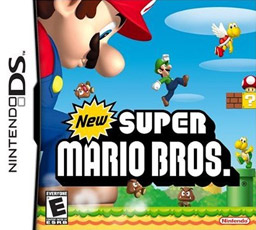
New Super Mario Bros. is a 2006 platform game developed and published by Nintendo for the Nintendo DS. It was first released in May 2006 in North America and Japan, and in PAL regions in June 2006. It is the first installment in the New Super Mario Bros. subseries of the Super Mario series and follows Mario as he fights his way through Bowser's henchmen to rescue Princess Peach. Mario has access to several old and new power-ups that help him complete his quest, including the Super Mushroom, the Fire Flower, and the Super Star, each giving him unique abilities. While traveling through eight worlds with more than 80 levels, Mario has to defeat Bowser Jr. and Bowser before saving Princess Peach.

Rygar is a 1986 side-scrolling platform game created by Tecmo. Originally released for Japanese arcades in June 1986, the game was subsequently ported to the NES (1987), Commodore 64 (1987), ZX Spectrum (1987), Amstrad CPC (1987), Master System (1988), Atari Lynx (1990), and X68000 (1994). Emulations have also been released for Xbox (2005), Sprint mobile phones (2005), Wii (2009), PlayStation 4 (2014), Nintendo Switch (2018), and Android (2023), with an unofficial fan-made emulation released for Amiga AGA in 2019. A remake, Rygar: The Legendary Adventure, was released for PlayStation 2 in 2002. The Legendary Adventure was remastered for the Wii in 2008 as Rygar: The Battle of Argus.

Super Princess Peach is a 2005 platform game developed by Tose and published by Nintendo for the Nintendo DS. It was released in Japan in October 2005 and worldwide the following year. Super Princess Peach is the first game to feature Princess Peach as the main protagonist on a dedicated video game console and the second overall after Princess Toadstool's Castle Run released in 1990 on the Nelsonic Game Watch.
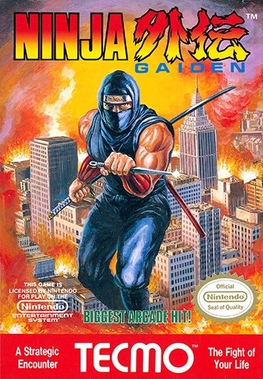
Ninja Gaiden, released in Japan as Ninja Ryūkenden and as Shadow Warriors in Europe, is a 1988 action-platform game developed and published by Tecmo for the Nintendo Entertainment System. Its development and release coincided with the beat 'em up arcade version of the same name. It was released in December 1988 in Japan, in March 1989 in North America, and in August 1991 in Europe. It has been ported to several other platforms, including the PC Engine, the Super NES, and mobile phones.
Rune Factory is a franchise of fantasy role-playing social simulation games created by Yoshifumi Hashimoto and primarily published by Marvelous. The games are developed by Hashimoto's studio Hakama, taking over from Neverland after they ceased operations in 2013. The series began as a spin-off to Marvelous' flagship franchise Story of Seasons. The Story of Seasons references were subsequently dropped starting with the second installment, in order to become its own series. With the first game published in 2006, the property consists of five main-series games, two spin-off titles and numerous manga adaptations.

Ninja Gaiden: Dragon Sword is a 2008 action-adventure game developed by Team Ninja and published by Tecmo and Ubisoft for the Nintendo DS. A main installment in the Ninja Gaiden series, it features Ryu Hayabusa as the protagonist. The game is the first portable video game title in the series to be developed by Team Ninja and the first game developed by this company to be released for the Nintendo system. Dragon Sword is set between Ninja Gaiden and Ninja Gaiden II.
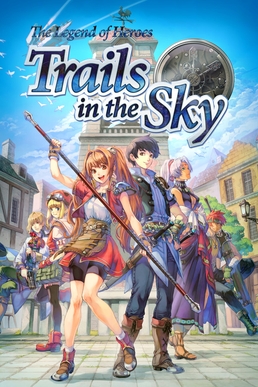
The Legend of Heroes: Trails in the Sky is a 2004 role-playing video game developed by Nihon Falcom. The game is the first in what later became known as the Trails series, itself a part of the larger The Legend of Heroes series.

Final Fantasy Fables: Chocobo's Dungeon is a 2007 role-playing video game published by Square Enix for the Wii. It is an installment in the Chocobo series that focuses on Chocobo and his quest to free a town lost in time from eternal forgetfulness. It is a loose sequel to Chocobo's Dungeon 2 on the PlayStation.
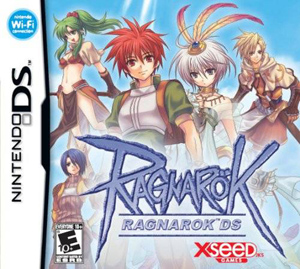
Ragnarok DS, known in Japan as Ragnarok Online DS, is a Nintendo DS video game based on the MMORPG Ragnarok Online and was released in Japan on December 18, 2008. Xseed Games published the game in North America on February 16, 2010. The game was also released in South Korea in June 2009.
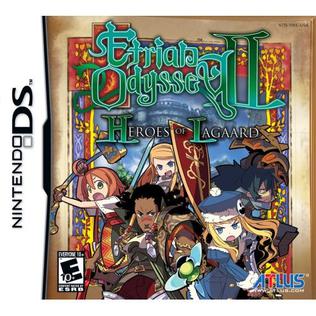
Etrian Odyssey II: Heroes of Lagaard is a 2008 dungeon crawler role-playing video game by Atlus for the Nintendo DS. Heroes of Lagaard is the sequel to Etrian Odyssey.

Kirby Super Star Ultra is a 2008 anthology action-platform game developed by HAL Laboratory and published by Nintendo for the Nintendo DS. The game is an enhanced remake of Kirby Super Star, originally released for the Super Nintendo Entertainment System in 1996, to commemorate the Kirby series' 15th anniversary. The remake retains all game modes found in the original, and adds four major new ones, along with adding updated visuals and full-motion video cutscenes.

The Wizard of Oz: Beyond the Yellow Brick Road, known in Japan as Riz-Zoawd, is a role-playing video game developed by Japanese developer Media.Vision for the Nintendo DS. The game is an adaptation of L. Frank Baum's 1900 novel The Wonderful Wizard of Oz, using its characters, locations and plot. The game was originally published in Japan by D3 Publisher on December 25, 2008. Xseed Games published the game in North America on September 29, 2009.
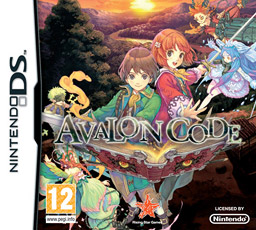
Avalon Code is a fantasy action role-playing game for Nintendo DS. It was developed by Matrix Software and published by Marvelous Entertainment.
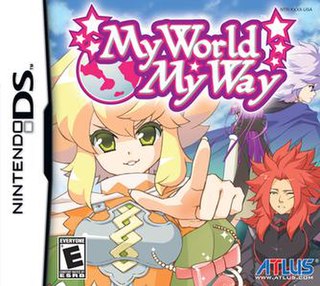
My World, My Way, released in Japan as Sekai wa Atashi de Mawatteru, is a 2008 role-playing video game developed by Global A Entertainment on Nintendo DS and PlayStation Portable, published in North America by Atlus. It features two key gameplay elements which puts the player into the role of Princess Elise, a young, spoiled princess on a quest to impress a handsome adventurer into being her boyfriend.

Ys Seven is a 2009 action role-playing game developed by Nihon Falcom. An installment in the Ys series, it was first released in Japan for the PlayStation Portable in September 2009. Xseed Games released the game in 2010 in North America in August, and Europe in November. The game was later released in Australia in February 2013. It was also released for Windows in China in June 2012, and worldwide by Xseed Games in August 2017.
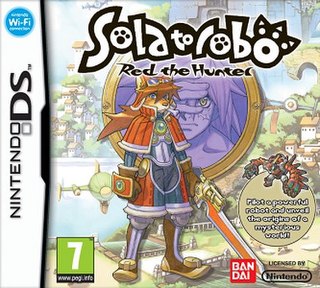
Solatorobo: Red the Hunter, originally released in Japan as Soratorobo -Sore Kara Kōda e- is an action role-playing video game developed by CyberConnect2 for the Nintendo DS. Originally released in Japan by Bandai Namco Games in October 2010, an English version was released by Nintendo for Europe in July 2011 and Australia the following November, with a North American release in September by Xseed Games. It is the spiritual sequel to Tail Concerto, and, like its predecessor, features artwork and character designs by manga artist Nobuteru Yūki and music by Chikayo Fukuda. The game includes animated cutscenes produced by Madhouse, as well as vocal themes performed by Tomoyo Mitani.

Yoshi's New Island is a 2014 platform video game developed by Arzest and published by Nintendo for the Nintendo 3DS. First released in Europe and North America in March 2014 as the third installment in the Yoshi's Island series, Yoshi's New Island is a direct continuation of the events of the ending of the 1995 Super Nintendo Entertainment System game Super Mario World 2: Yoshi's Island, and is set prior to the events of the 2006 Nintendo DS title Yoshi's Island DS.



















